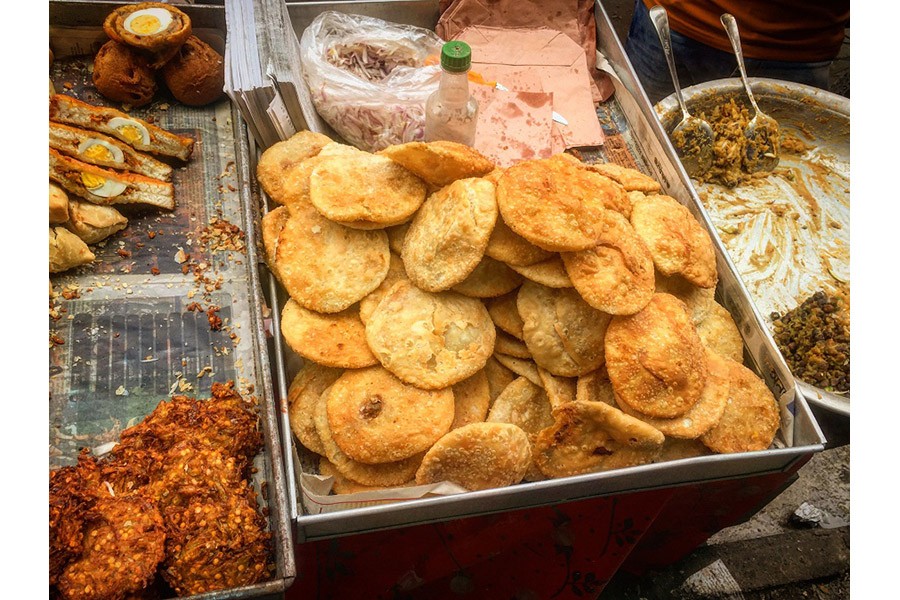The ideal measure of a person's daily calorie intake depends on age, metabolism, daily physical activities, etc. Generally, this requirement is considered 2,500 calories for men and 2000 calories for women per day.
If the total food intake of the whole day is divided into four meals, including three large meals and the afternoon snacks, breakfast requires a maximum of 600 calories (30 per cent of daily requirement).
But do we count these calories whenever we eat food?
In Bangladesh, whether it is a family dining or a bachelor mess, the most common food items eaten by middle-class people for breakfast are two parathas and an egg omelette. Many people also add Dal Bhaji to it.
Where 1-piece Plain Paratha contains 268 calories, 2-piece paratha and one egg omelette give 630 calories, and with one serving of mung dal bhaji, the grand total nears the 750 calories mark approximately in the morning itself.
Even for many people, it is a light snack and they include more parathas or side dishes with tea or fruit juice, while a two-paratha breakfast can beat our daily calorie needs for breakfast.
The more alarming fact is that the total amount of vitamins and minerals in this breakfast is little compared to our everyday needs.
In other words, you have eaten extra as per the calorie requirement, but there is still a nutrition deficiency.
Many middle-class families in Bangladesh can afford a balanced-nutrition diet. However, due to lack of knowledge, they regularly consume imbalanced meals, leading to obesity and malnutrition.
If you have read enough already, here’s a reminder - all these are about the large meals of a day. What about those small intakes which we do not even count as any meal?
If normal physical activities are maintained, no matter how heavy it was, if you have had the breakfast at the right time, a small appetite will appear before lunch.
Many people eat fried snacks like pakora or Shingara along with tea or coffee between the two meals. One piece of regular-triangle of Shingara has 252 calories, which is almost similar to a plateful of cooked rice.
With milk and sugar, there are 52 calories in 1 cup of tea and 122 calories in 1 cup of coffee.
This means that if you eat two Shingaras and a cup of tea or coffee as ‘lite snacks,’ which is not part of your main course, it will give you almost the same amount of calories as your lunch, which is totally extra with your daily need and doesn't even provide any nutritious value.
Many consume 3-4 cups or more of tea/coffee a day between work which provides them with the equivalent of one plate of rice or more calories throughout the day.
Besides, there are 478 calories in 1 medium serving of chocolate shake and 105 calories in 1 serving of soft drinks.
Many people are worried about obesity and try to have less rice in every main course meal to lose weight. At the same time, they totally forget about the big calorie intakes through tea, coffee, drinks and fried snacks.
As a result, they become accustomed to an unhealthy diet, which neither helps to reduce weight nor gives good nutrition.
If someone has to pick a diet plan to lose weight, he must seek the help of a doctor or a nutritionist. Because omitting certain foods is not the answer. Food intakes need to maintain calorie and nutrition needs.


